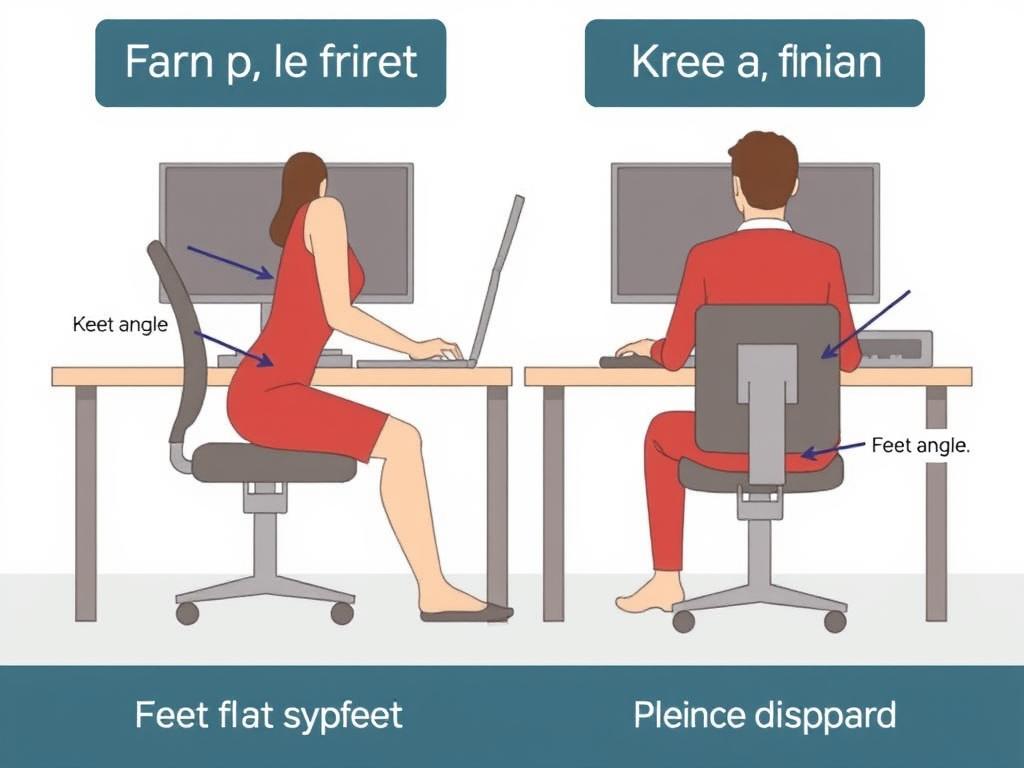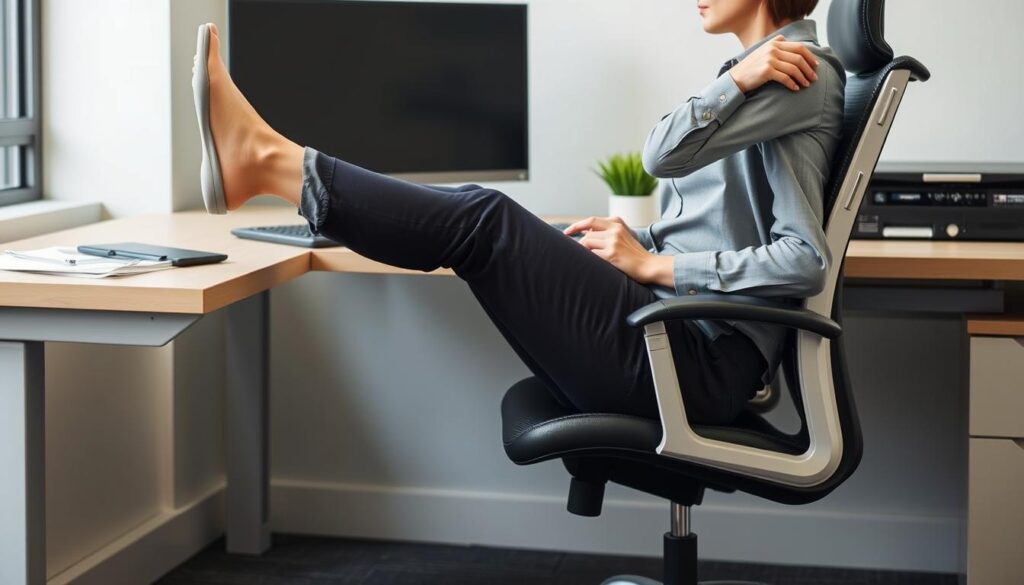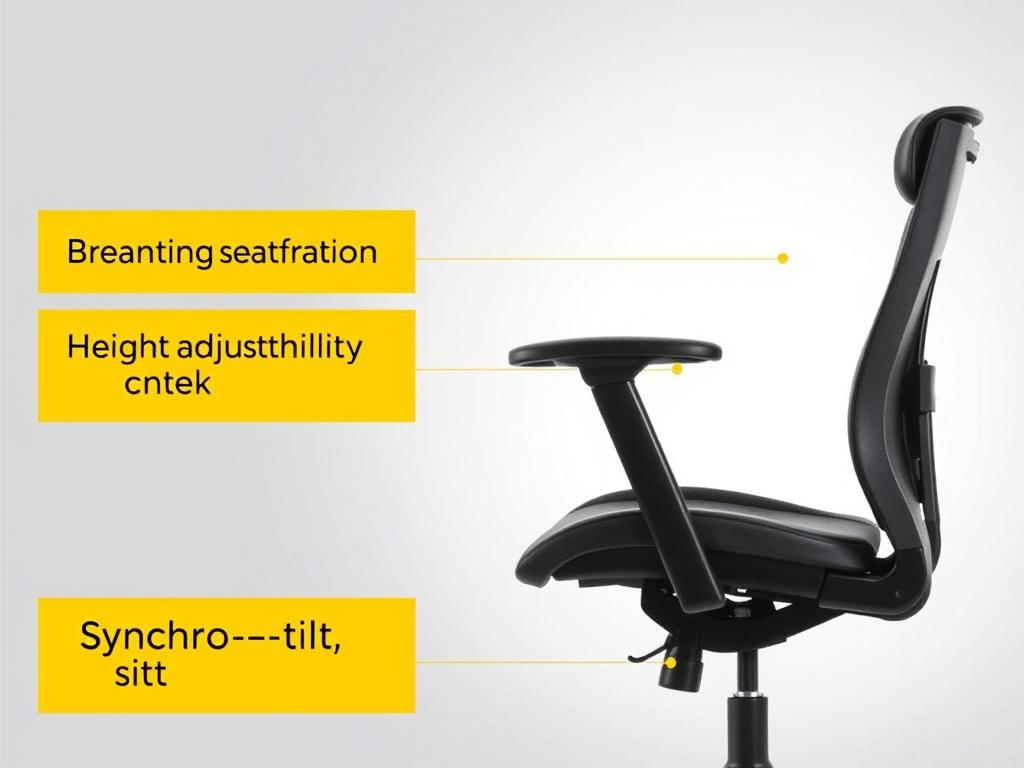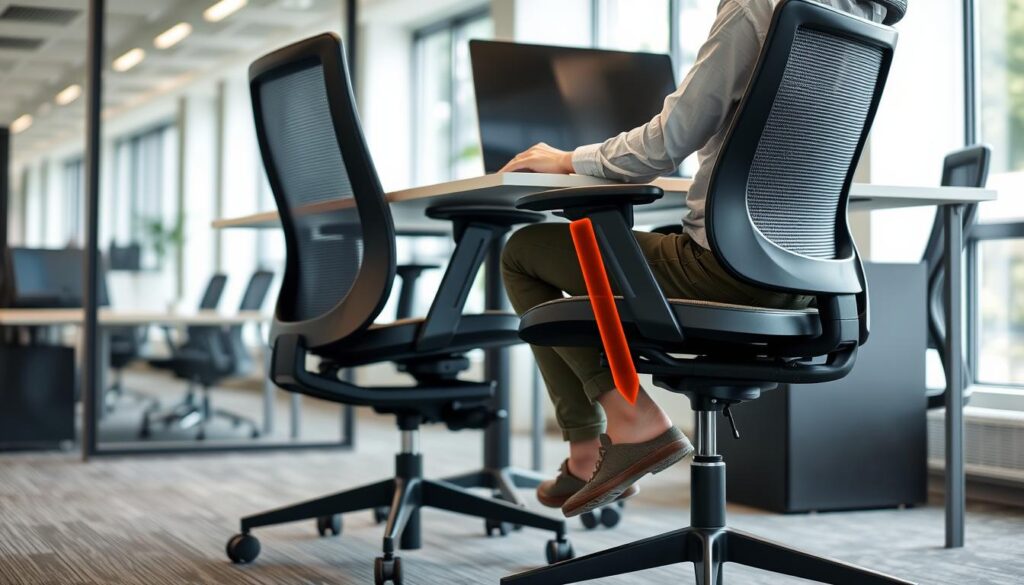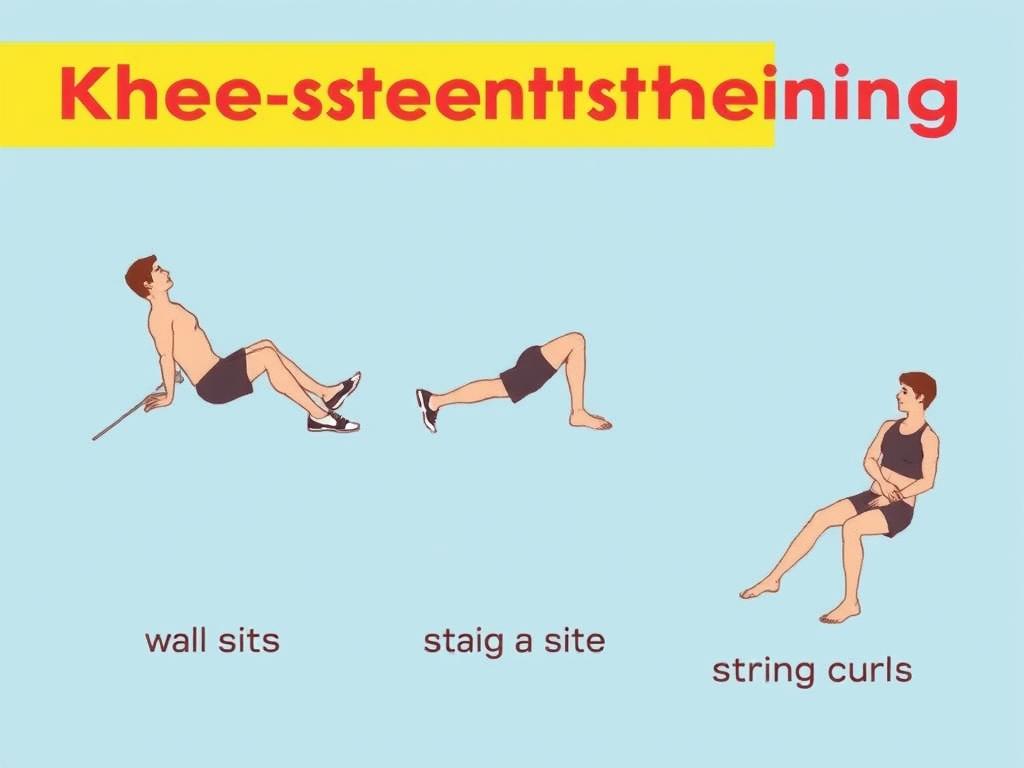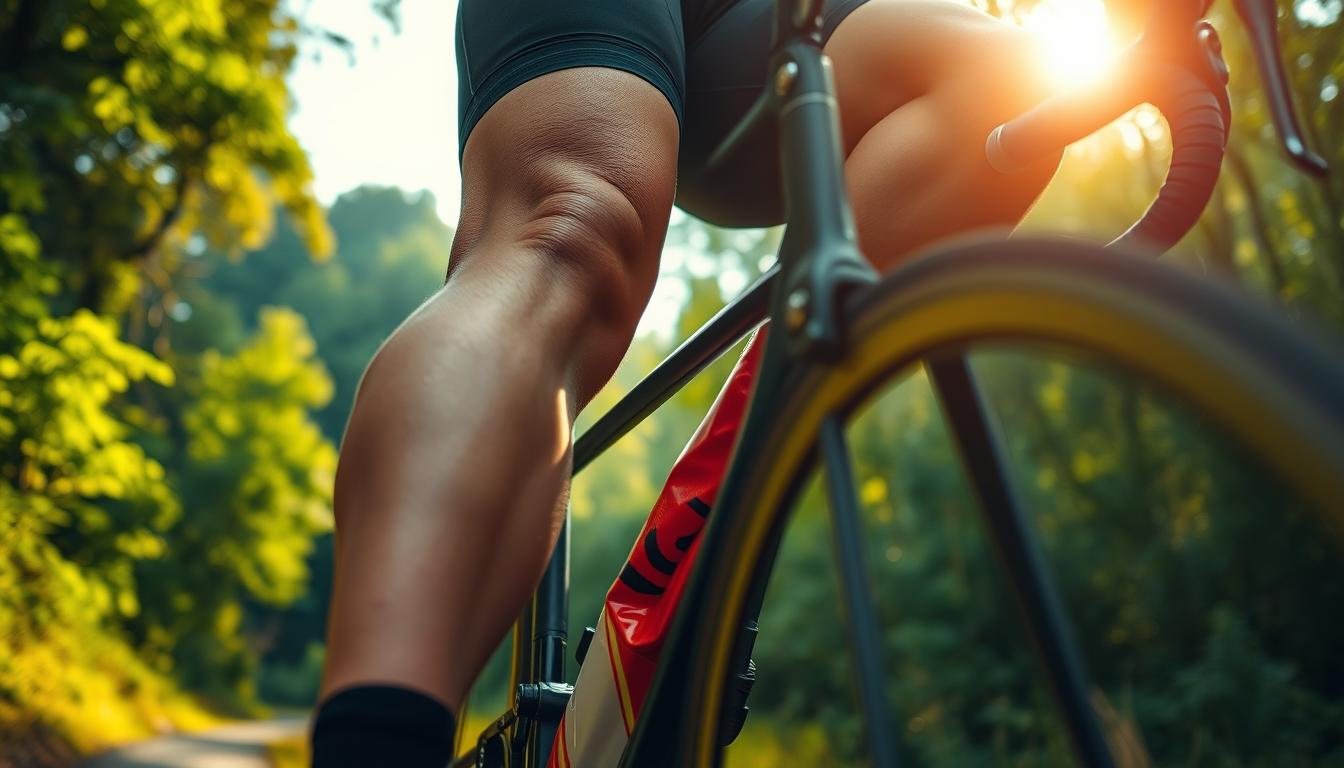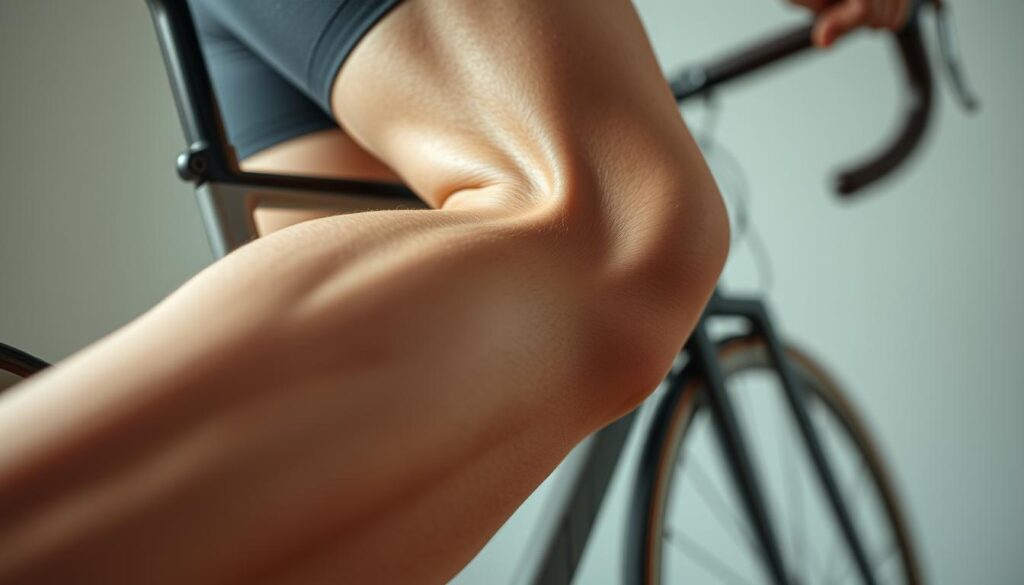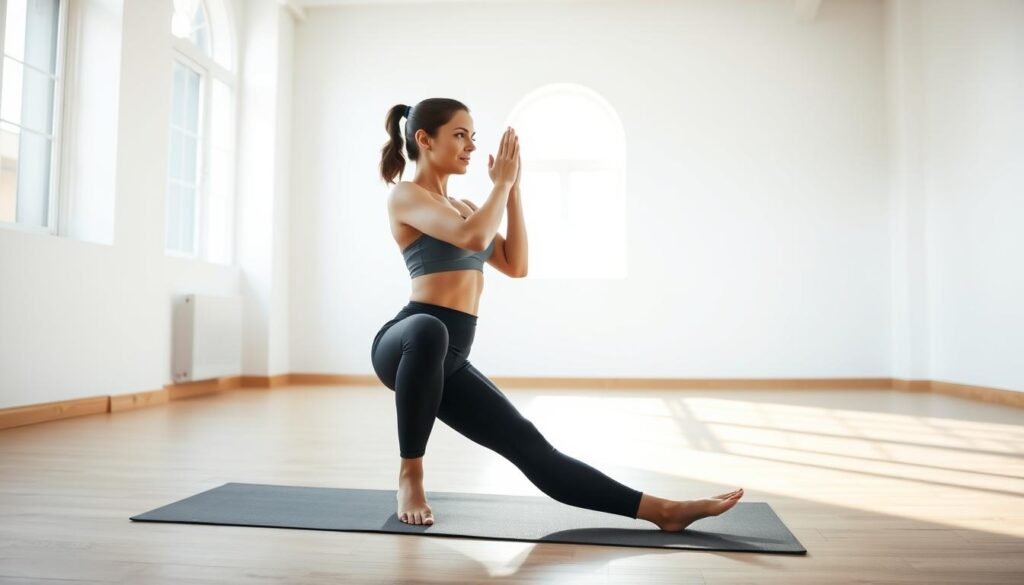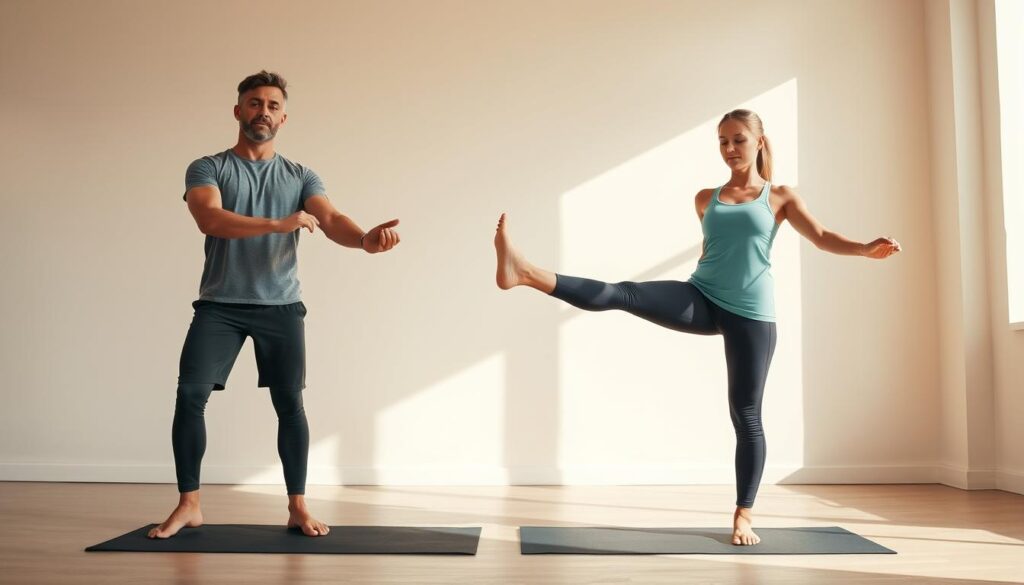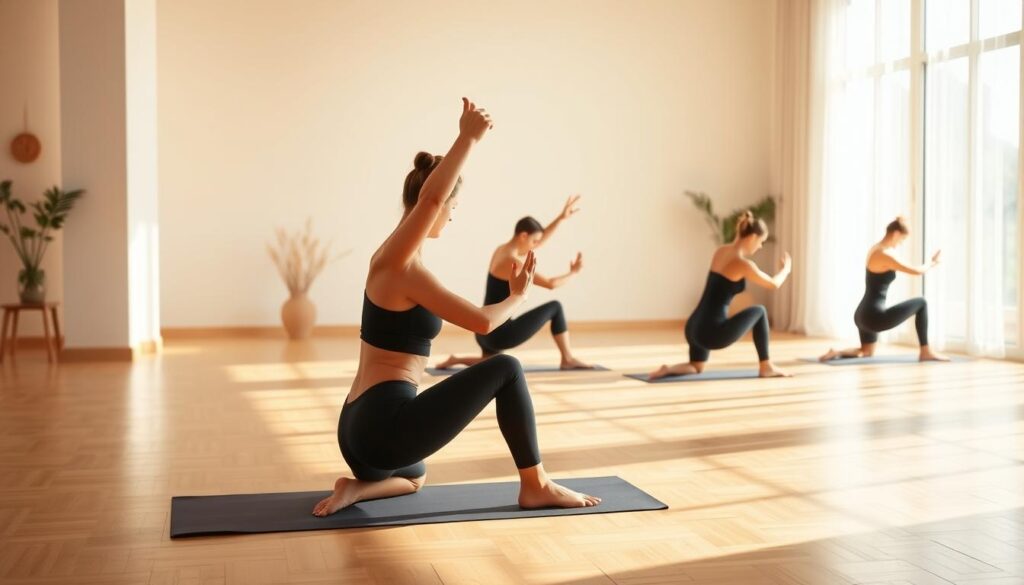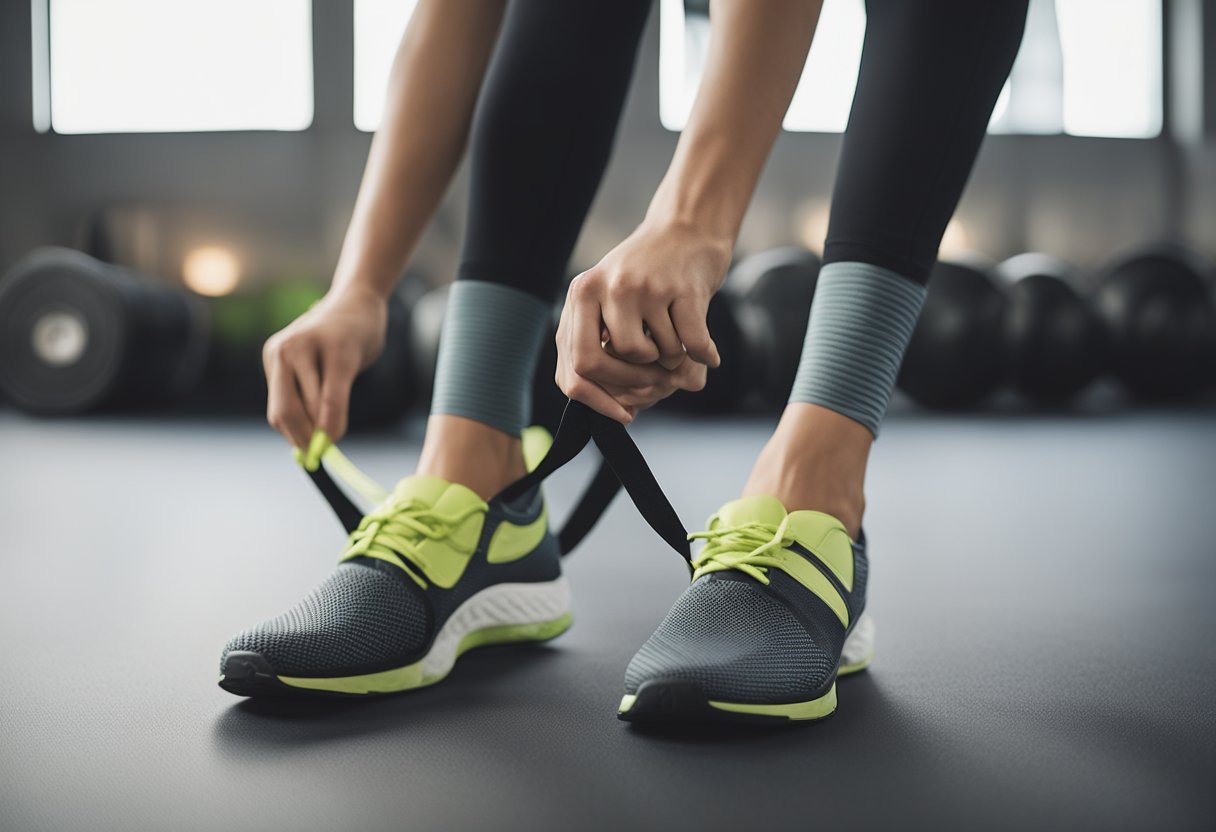Millions of office workers spend their days sitting at desks, often unaware of the strain their chair height is putting on their knees. Knee pain is a common complaint among those who spend long hours at the office, and it’s not just about being sedentary.
The height of your office chair plays a crucial role in maintaining proper posture and preventing discomfort. When your chair is not adjusted correctly, it can lead to pain and discomfort in your knees. So, how can you avoid this issue?
We will explore the causes of knee pain related to office seating and provide comprehensive solutions to alleviate and prevent it.
Key Takeaways
- Proper chair height adjustment is crucial for preventing knee pain.
- Poor posture and extended sitting periods contribute to discomfort.
- Ergonomic adjustments can significantly reduce knee strain.
- Exercises and professional treatment options are available for relief.
- Most chair-related knee pain is preventable with proper knowledge and workplace setup.
Understanding the Connection Between Chair Height and Knee Pain
The height of your office chair can significantly impact your knee health. When you’re inactive for an extended period, you may experience knee pain. Sitting for a certain length of time can cause your muscles and tendons to stiffen, leading to discomfort.
How Improper Chair Height Affects Your Knees
Improper chair height can lead to knee pain by putting unnecessary pressure on the knee joint. When your chair is too high or too low, it can cause your knees to bend at an awkward angle, straining the surrounding muscles and ligaments. This strain can result in discomfort and pain, particularly after prolonged sitting.
- Prolonged sitting in a chair that’s too high can cause pressure on the thighs and knees.
- Sitting too low can lead to excessive knee flexion, straining the knee joint.
- Static positioning can lead to muscle stiffness and increased pressure on the knee joint.
The Anatomy of Knee Stress While Sitting
The knee joint is a complex structure involving the patella, femur, tibia, ligaments, and surrounding muscles. Prolonged sitting affects each of these components, particularly by reducing the natural lubrication provided by synovial fluid. This reduction can lead to increased friction and wear on the joint, contributing to pain and discomfort.
For more information on ergonomic setups that can help alleviate knee pain, you can visit our guide on ergonomic setups for knee pain relief.
Common Causes of Knee Pain from Office Chair Height
Office chair height can significantly impact knee health, leading to pain and discomfort. The way we sit at our desks can either alleviate or exacerbate knee issues, depending on whether our chair height is appropriate for our body.
Sitting Too Low: Excessive Knee Flexion
Sitting too low in an office chair can cause the knees to flex more than they should, leading to strain on the knee joint. Excessive knee flexion can result in discomfort and pain over time. When the knees are bent at a sharp angle, it can reduce blood flow and cause stiffness.
According to health experts, maintaining a knee angle between 90 to 120 degrees is ideal for minimizing strain.
Sitting Too High: Pressure on Thighs and Knees
On the other hand, sitting too high can also cause knee pain by putting pressure on the thighs and knees. When the chair is too high, it can cause the legs to be positioned in a way that puts additional stress on the knee joint. This can lead to discomfort and pain, particularly in the front of the knee.

Prolonged Sitting Without Breaks
Prolonged sitting without taking breaks is another significant factor that contributes to knee pain, regardless of the chair height.
“Sitting for more than 6 to 8 hours a day is potentially bad for you. If you must be seated for long periods, move around and stretch every 30 to 60 minutes.”
It’s recommended to incorporate movement into your daily routine to mitigate the negative effects of prolonged sitting.
Static positioning during extended periods of sitting reduces circulation and joint lubrication, leading to stiffness and discomfort. Lack of movement affects muscle tone and joint stability around the knee, potentially leading to pain when standing after prolonged sitting.
| Cause | Effect |
|---|---|
| Sitting too low | Excessive knee flexion, strain on knee joint |
| Sitting too high | Pressure on thighs and knees |
| Prolonged sitting without breaks | Reduced circulation, joint stiffness, discomfort |
Even with the perfect chair height, sitting for long periods without breaks can lead to knee pain. Incorporating movement breaks into a busy workday is crucial. Simple actions like standing up, stretching, or taking a short walk can significantly benefit knee health and overall well-being.
Identifying Signs Your Chair Height Is Causing Knee Pain
The height of your office chair can significantly impact your knee health, potentially leading to pain. When your chair is not adjusted properly, it can put unnecessary stress on your knees, leading to discomfort. We will guide you through identifying whether your chair height is the cause of your knee pain.
Pain Patterns and Symptoms to Watch For
Knee pain caused by an improperly adjusted chair height often manifests in specific patterns. If you experience knee pain while sitting or when standing up from a seated position, it could be related to your chair height. The discomfort you feel in your knees when sitting could indicate underlying causes, such as arthritis or patellofemoral pain (PFP). Stiffness and pain after periods of inactivity may also suggest osteoarthritis, according to Harvard Medical School.
Differentiating Chair-Related Pain from Other Knee Conditions
Distinguishing between knee pain caused by chair height and other knee conditions is crucial. Chair-related pain typically improves with changes to sitting habits. In contrast, medical conditions like osteoarthritis, patellofemoral pain syndrome, and meniscus injuries often require different interventions. The timing, location, and quality of pain provide important diagnostic clues. For instance, if you experience knee pain sitting for long periods or when transitioning from sitting to standing, it may be related to your chair height. However, if the pain persists or is accompanied by other symptoms, it may be necessary to consult a healthcare provider.
Pre-existing knee conditions can be exacerbated by improper chair height, creating a complex clinical picture. Understanding the factors that influence knee pain, such as age, activity level, and medical history, can help determine the appropriate course of action.
Ergonomic Solutions for Proper Chair Height
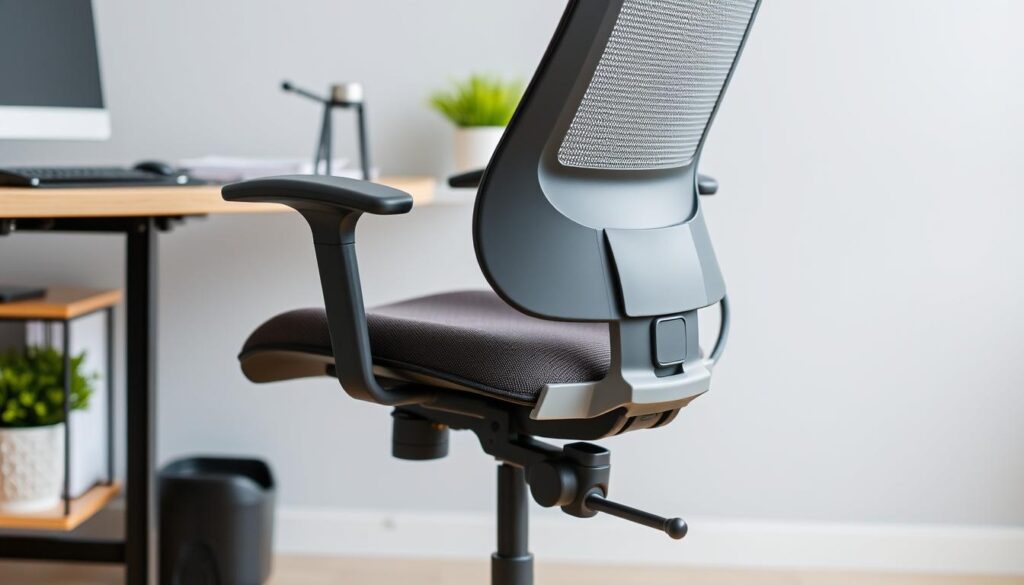
The right chair height is essential for maintaining healthy knees while working. An ergonomic office chair can make a significant difference in reducing knee pain. We recommend selecting a chair that properly supports your spinal curves and adjusting the armrests so your arms can comfortably rest on them with your shoulders relaxed.
Finding Your Ideal Chair Height
To find your ideal chair height, sit in the chair with your feet flat on the floor or on a footrest, keeping your knees at or below hip level. Adjust the chair height so that your thighs are parallel to the floor, and your knees are at a 90-degree angle. This position helps to reduce pressure on your knees and promotes good blood circulation.
Proper Foot Positioning and Support
Proper foot positioning is crucial for maintaining the correct chair height. Ensure that your feet are flat on the floor or on a footrest, with your knees at or below hip level. This helps to distribute your weight evenly and reduces pressure on your knees. Consider using a footrest if necessary, to achieve the optimal position.
Recommended Chair Features for Knee Health
When selecting an ergonomic chair, several features can contribute to knee health and comfort. Key features include:
- Seat depth adjustment to ensure a gap between the back of your knees and the front of the seat
- Seat cushioning materials and designs that provide optimal support without creating pressure points
- Waterfall seat edges to reduce pressure on the posterior thighs and improve circulation
- Adjustable seat pan tilt to affect weight distribution and knee positioning
By considering these features and adjusting your chair accordingly, you can significantly reduce the risk of knee pain and promote a healthier working environment.
Exercises and Stretches to Relieve Knee Pain from Office Chair Height
Relieving knee pain caused by office chair height involves a combination of exercises, stretches, and regular movement breaks. When you sit for long periods, your knees can become stiff and painful. Incorporating simple exercises and stretches into your daily routine can help alleviate this discomfort.
Strengthening Exercises for Knee Support
Strengthening the muscles around your knee can provide better support and reduce pain. Simple exercises like straight leg raises can be done under your desk. To perform this exercise, sit with your legs straight out in front of you, then lift one leg a few inches off the floor and hold for a few seconds before lowering it back down. Repeat this exercise 10-15 times on each leg.
Stretches to Perform at Your Desk
Stretching can help improve flexibility and reduce stiffness in your knees. One effective stretch is the seated knee extension. While seated, slowly lift one leg out straight, holding for a few seconds before lowering it back down. Perform this stretch 10 times on each leg. Another beneficial stretch is the knee flexion stretch, where you gently pull your heel towards your buttocks, holding for a few seconds before releasing.
Movement Breaks to Incorporate Throughout the Day
Taking regular breaks to stand up and move around can significantly reduce knee pain associated with sitting long. We recommend standing up at least once every 20 to 30 minutes to stretch or take a short walk. Even brief periods of movement can improve circulation and reduce the negative effects of extended periods of sitting.
By incorporating these exercises, stretches, and movement breaks into your daily routine, you can effectively alleviate knee pain caused by office chair height and improve your overall comfort while working.
Creating a Knee-Friendly Workspace Beyond Chair Height
Optimizing your workspace for knee comfort involves a multifaceted approach that goes beyond chair adjustments. To create a knee-friendly workspace, we need to consider various factors that contribute to knee health and overall posture.
Desk Height and Positioning
The height and positioning of your desk play a crucial role in maintaining proper posture and reducing knee pain. Ensure your desk is at a comfortable height that allows you to work with your elbows at a 90-degree angle and your monitor at eye level. This will help maintain a neutral spine alignment and reduce strain on your knees.
Alternative Seating Options
In addition to traditional office chairs, alternative seating options can help vary your posture and reduce knee stress. Consider using a balance ball or a kneel chair to engage your core and promote good posture. These alternatives can help distribute your weight more evenly and alleviate pressure on your knees.
Standing Desk Considerations
Standing desks provide an alternative to prolonged sitting, allowing individuals to change their working position and engage in more dynamic movements throughout the day. When using a standing desk, ensure the surface is at a comfortable height that allows you to work with your elbows at a 90-degree angle. Consider using an anti-fatigue mat to reduce strain on your knees and promote comfort while standing.
- Adjust the standing desk to the correct height to maintain optimal knee alignment.
- Use anti-fatigue mats and wear proper footwear to enhance knee comfort.
- Gradually transition to using a standing desk, starting with recommended standing-to-sitting ratios.
When to Seek Professional Help for Persistent Knee Pain
Knowing when to seek medical help for persistent knee pain can significantly impact your recovery. If you’re experiencing knee pain that doesn’t subside, it’s crucial to understand the signs that indicate a need for professional care.
Red flag symptoms such as severe pain, swelling, or instability may require immediate medical attention. Consulting healthcare providers like primary care physicians, physical therapists, or orthopedists can help determine the cause of your knee pain.
During a professional evaluation, you can expect diagnostic tests such as physical exams, blood work, or X-rays. Treatment options may range from physical therapy to medication or surgical interventions. Effective communication with your healthcare provider about your workplace-related knee pain is vital.
For comprehensive management, professional treatment can complement ergonomic improvements. Conditions like osteoarthritis may require specialized care. Monitoring your symptoms and seeking timely medical care can prevent worsening of existing conditions.
FAQ
What are the common signs that my office chair height is causing knee discomfort?
We often experience stiffness, pressure, or pain in our knees when our chair height is not adjusted properly. If we sit for extended periods with our knees in an awkward position, it can lead to discomfort and potentially cause long-term problems.
How can I adjust my chair to relieve knee pressure?
To alleviate knee pressure, we should adjust our chair to a height that allows our feet to be flat on the floor or on a footrest, with our knees at or below hip level. This position helps to reduce strain on our knee joint and promotes good posture.
Can using an ergonomic chair help reduce knee pain?
Yes, using an ergonomic chair can help reduce knee pain by providing proper support and promoting good posture. Ergonomic chairs are designed to adjust to our body, reducing pressure on our knees and other joints.
Are there any exercises I can do at my desk to help alleviate knee pain?
We can perform simple stretches and exercises at our desk to help alleviate knee pain. For example, we can do some knee bends, toe raises, or leg lifts to loosen up our knee joint and improve circulation.
Can osteoarthritis or other underlying conditions contribute to knee pain from office chair height?
Yes, underlying conditions such as osteoarthritis can contribute to knee pain from office chair height. If we have a pre-existing condition, we may be more susceptible to knee pain from sitting in an awkward position for long periods.
How often should I take breaks to move around and reduce knee pressure?
We should take regular breaks to stand up, stretch, and move around. Taking a short walk or doing some stretching exercises every 30-60 minutes can help reduce knee pressure and improve overall comfort.


